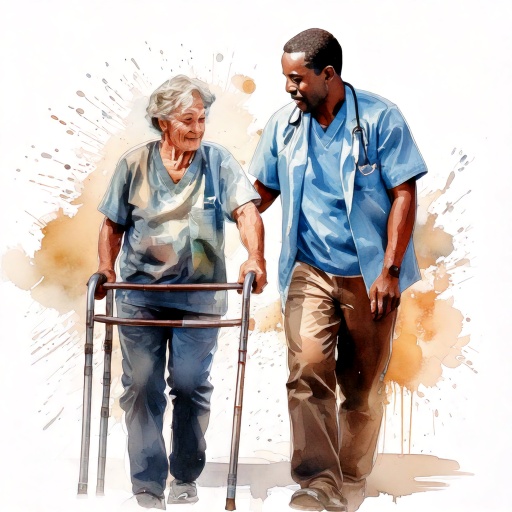April is Parkinson’s Awareness Month, a time to raise awareness about Parkinson’s disease (PD), a neurodegenerative disorder that affects movement, muscle control, and coordination. Parkinson’s disease can impact anyone, and it’s essential to understand its symptoms, challenges, and the resources available to support those living with this condition. By educating ourselves and others, we can help create a more supportive environment for individuals affected by Parkinson’s.
Understanding Parkinson’s Disease
Parkinson’s disease is a progressive neurological condition that affects movement. It occurs when nerve cells in the brain that control muscle movement become damaged or die, leading to tremors, stiffness, slowness of movement, and balance issues. While the exact cause of Parkinson’s is unknown, research continues to explore genetic and environmental factors that may contribute to the disease.

Key symptoms of Parkinson’s include:
- Tremors (shaking in the hands, arms, or legs)
- Bradykinesia (slowness of movement)
- Muscle rigidity (stiffness in the limbs and neck)
- Postural instability (balance problems)
- Speech and swallowing difficulties
Symptoms can vary from person to person, and the progression of the disease differs, with some individuals experiencing mild symptoms for many years while others may see rapid deterioration.
Supporting Employees with Parkinson’s Disease
At work, individuals living with Parkinson’s disease may face challenges with physical tasks, speech, and mobility. As an organization, it’s important to be mindful of these challenges and ensure we create an inclusive and supportive workplace.
Here are ways we can help employees affected by Parkinson’s disease:

- Workplace Adjustments: Consider flexible work schedules or alternative workspaces for those who need to manage their symptoms. Offering ergonomic adjustments, such as comfortable seating or assistive technologies, can help employees with motor impairments remain productive.
- Mental Health Support: Parkinson’s disease can be accompanied by emotional challenges, including anxiety and depression. Our Employee Assistance Program (EAP) offers counseling services for mental health support, which can be especially helpful for managing the emotional toll of living with a chronic illness.
- Physical Therapy and Exercise Programs: Regular exercise can improve strength, flexibility, and overall quality of life for those with Parkinson’s. Our health benefits includes physical therapy services that can help employees with Parkinson’s manage their symptoms and improve their mobility.
Relevant Benefits to Support Your Health and Well-Being
Our benefits package includes several resources that may be particularly beneficial for those managing Parkinson’s disease:
- Employee Assistance Program (EAP): Provides confidential support for mental health concerns, including counseling for stress, depression, and anxiety, which can often accompany a chronic illness like Parkinson’s.
- Physical and Occupational Therapy: Coverage for physical and occupational therapy can help employees living with Parkinson’s maintain mobility, strength, and independence.
- Health Coaching and Wellness Programs: Regular exercise is important for managing Parkinson’s symptoms. Our wellness programs may include fitness activities or health coaching that help employees stay active and engaged.
Call to Action
This Parkinson’s Awareness Month, we encourage you to learn more about Parkinson’s disease and how we can create a more supportive workplace for those living with it. If you or someone you know is affected by Parkinson’s, consider reaching out to our Benefits team for guidance on available resources. We are committed to fostering an inclusive environment where everyone has access to the support they need to thrive, no matter their health challenges.
References
- Parkinson’s Foundation. (2023). What is Parkinson’s disease? Retrieved from https://www.parkinson.org
- National Institute of Neurological Disorders and Stroke. (2022). Parkinson’s disease information page. Retrieved from https://www.ninds.nih.gov
- American Parkinson Disease Association. (2023). Supporting those with Parkinson’s. Retrieved from https://www.apdaparkinson.org









